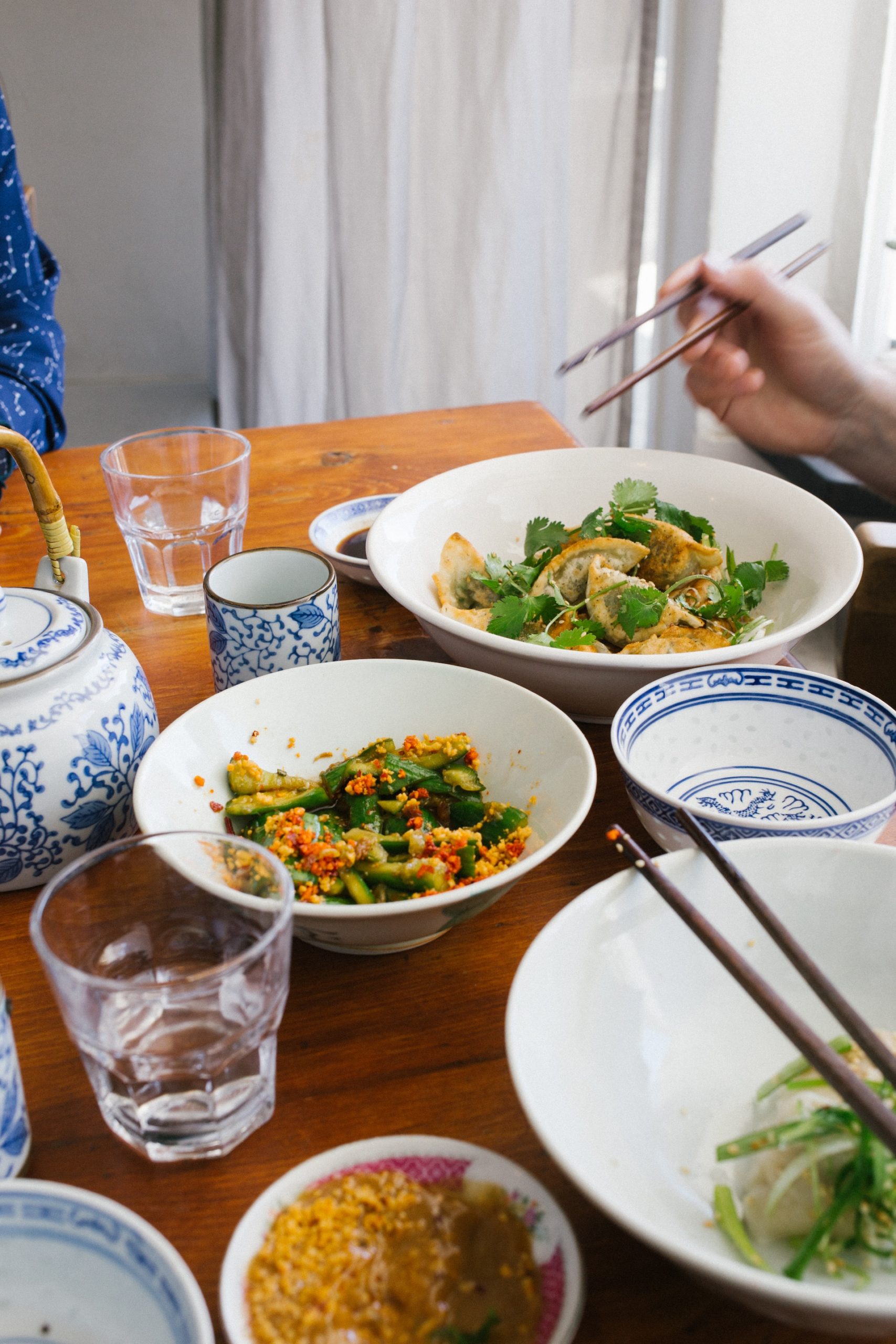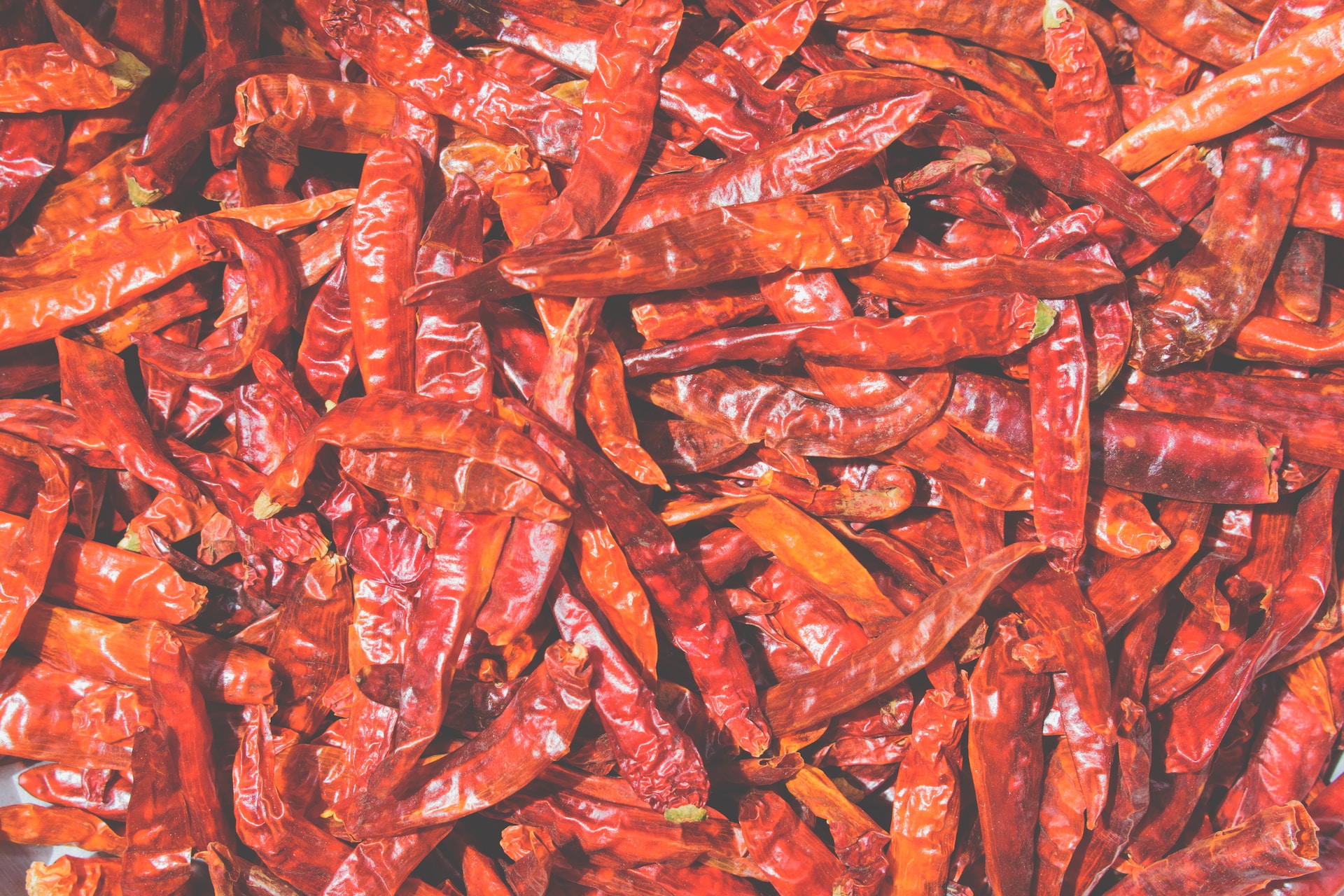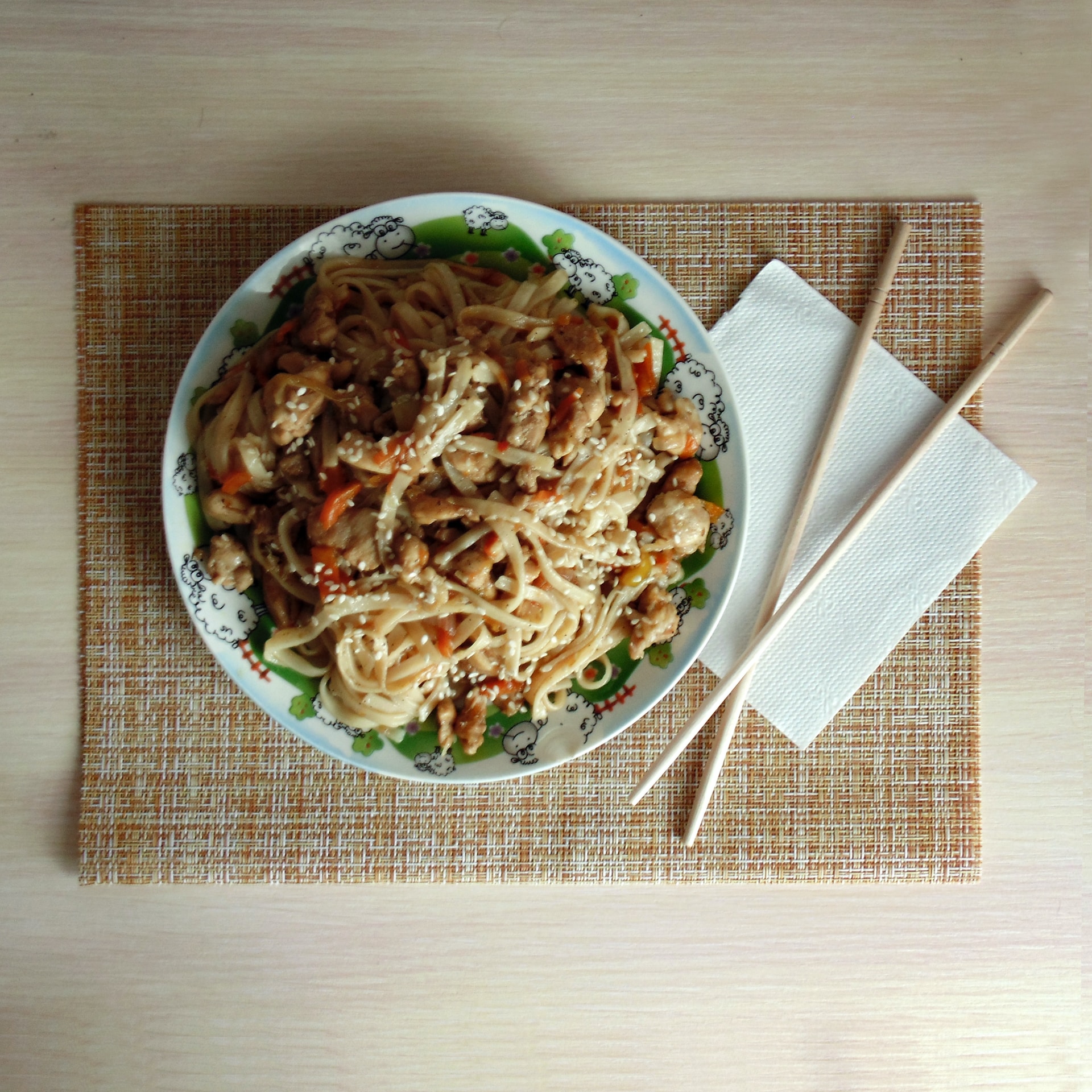Hey food lovers! Ever thought about how Chinese your go-to Chinese takeout really is? Guess what? Some top picks aren’t from China at all!
They’re a blend of “East meets West,” or what we like to call fusion cuisines, sprinkled with a bit of innovation.
Ready to uncover the real story behind these on most Chinese takeout menus? Let’s dive in!

Photo by charlesdeluvio on Unsplash
Chop Suey: a stir-fry sensation from the USA
Ever heard the term “chop suey” and wondered about its Chinese origins?
Well, let’s unravel the mystery behind its intriguing name – 炒雜碎/炒杂碎 (chǎo zá suì). 炒 stands for “stir-fry,” 雜/杂 means “mixed,” and 碎? It’s all about “broken into pieces.”
So, just from the name alone, you can guess the chef’s intentions: a delightful medley of ingredients, stir-fried to perfection.
What’s the charm behind Chop Suey? Absolute freedom!
Think of it as a blank canvas. Whether it’s veggies from the crisper, yesterday’s roast chicken, or some unexpected delights, they all find a home in this dish.
Just remember, for that genuine Chop Suey touch, don’t skimp on the soy sauce and sesame oil.
And, if you’re aiming for perfection, dice everything small for uniform cooking. If you’ve got a wok, put it to use! It’s not just a pretty face; it’s the secret to those perfectly blended flavors.
While 炒雜碎/炒杂碎 might sound like it’s straight out of a Chinese kitchen, it’s actually a proud American creation.
Crafted with love and innovation by Chinese immigrants in the US, they fused local ingredients with their age-old cooking techniques.
The masterpiece? A dish that’s not only a Chinese-American icon but also a delectable slice of history.
Sweet and Sour Pork: an Anglo-Cantonese delight
Next up on our menu of mysteries? The tangy and tempting – sweet and sour pork. Its Chinese name is 咕嚕肉/咕噜肉 (gū lū ròu).
That quirky sounding 咕嚕/咕噜? Some say it’s a playful nod to 古老, suggesting an “ancient” heritage in Chinese culinary arts. And for those wondering, 肉 (ròu) simply means “meat.”
Whipping this dish up calls for the king of meats – pork. But hold on, not just any cut will do.
For a truly tantalizing taste, pork belly takes the crown.
If the richness of the belly isn’t your vibe, the leaner, often more wallet-friendly pork shoulder steps up to the plate.
Before firing up the wok, give your pork a good massage with light soy sauce and a sprinkle of garlic powder. A 1-2 minute rub ensures flavor-infused bites.
And for that melt-in-the-mouth tenderness? Crack in an egg and let it work its magic. Toss in vibrant bell peppers, onions, and for a touch of authentic zing, fresh pineapples and tomatoes.
But here’s the tangy twist: while the sweet and sour base has Cantonese origins, the dish you’re spooning from your takeout box has a British touch.
The secret? Ketchup!
Not exactly a staple in traditional Cantonese kitchens.
As Chinese immigrants in the UK and the US stirred their Chinese woks, they blended their traditional skills with a Western love for sweet-tart goodness, crafting a dish that’s become a global sensation.
General Tso’s Chicken: a Taiwanese chef’s creation
Ready to turn up the heat with a touch of sweetness? Say hello to the dish: General Tso’s Chicken.
The Chinese name of the dish is 左宗棠雞/左宗棠鸡 (zuǒ zōng táng jī). You’d be forgiven for thinking 左宗棠 (zuǒ zōng táng), or Tso Tsung-tang, whipped this up himself back in the 1800s, given he was quite the military maverick of the Qing Dynasty.
But surprise! This spicy sensation was crafted in the 1960s by Taiwanese chef Peng Chang-Kuei (彭長貴/彭长贵).
Legend has it he designed the dish for an American general’s palate, but with a fiery Hunanese twist, paying homage to his origins in Hunan, China – a region celebrated for its spicy zing.

Now, ditch the pork, because chicken (雞/鸡; jī) breast takes center stage here.
Like our earlier dish, a marinade is key: a fusion of half an egg, a pinch of salt, cornstarch, and water. Let it soak up the flavors for 10 minutes while you whip up the batter.
Craving that crispiness? The secret is in the batter mix – a 3:1 ratio of flour to cornstarch. Dunk those chicken pieces ensuring a generous coat, and then double-fry for that extra crunch.
Time for the sauce – a fragrant blend of dried chili peppers, garlic, ginger, soy sauce, vinegar, and yes, ketchup.
Get it simmering, toss in your crispy chicken, and some vibrant veggies, and seal the deal with a cornstarch thickening and a final drizzle of sesame oil.
The outcome? A plate of golden, crispy chicken drenched in a tantalizing sauce that dances between sweet and heat.
Even if it wasn’t General Tso’s own recipe, this Taiwanese innovation named in his honor has marched its way to worldwide acclaim, becoming a staple on Chinese takeout menus everywhere.
Kung Pao Spaghetti: an Italian-Chinese fusion feast!

Photo by Matvey Smirnov on Unsplash
Ever savored the spicy, salty, and sweet symphony of Kung Pao chicken? Now, imagine that dance of flavors twirling around… spaghetti!
Enter Kung Pao Spaghetti – a dish that’s as fun to say as it is to eat.
A fusion brainchild marrying the best of both Chinese and Italian worlds, it’s proof that foodies know no boundaries!
Breaking down its Chinese name, 宮保義大利麵/宫保意大利面 (gōng bǎo yì dà lì miàn), gives us a peek into its makeup.
While 宮保/宫保 (gōng bǎo; kung pao) sets the stage with its signature flavors, 義大利/意大利 (yì dà lì) translates to “Italy” and 麵/面 (miàn)? That’s all about the “noodles.”
Kickstart this culinary crossover with spaghetti, but don’t shy away from other kinds of pasta if you’re feeling adventurous.
The heart of the dish is the Kung Pao sauce – a spicy melody of dried chili peppers, soy sauce, vinegar, and a sweet touch of sugar. And what’s Kung Pao without that peanut crunch?
Vegetarians and vegans, rejoice! You can bask in its rich flavors without meat, as the saucy spaghetti stands strong on its own.
So, what do you get when Italian spaghetti serenades Chinese Kung Pao? A dish that’s not just a palate pleaser, but a testament to the innovative spirit of global cuisines, proving that Chinese flavors can jazz up just about anything!
Fortune Cookies: a crunchy tale with Japanese roots
Ah, dessert – the perfect bowtie for any dining experience.
Now, picture this: wrapping up a sumptuous Chinese meal and being handed a crispy, crescent-shaped delight. Enter the fortune cookie, the iconic golden closer that diners eagerly crack open, not just for its sweet bite but for the secret message tucked inside.
Fortune cookie is translated to 幸運餅乾/幸运饼干 (xìngyùn bǐnggān), literally meaning “lucky cookie.”
But here’s a fun tidbit that is as surprising as the fortunes themselves: these cookies aren’t originally Chinese, but Japanese!
Journeying to the shores of the United States with Japanese immigrants in the early 1900s, it didn’t take long for these message-filled munchies to find a new home.
Chinese restaurateurs, always keen to add a delightful twist to the dining experience, adopted the fortune cookie, giving it center stage as the final act in their culinary performance.
There you have it! Those dishes you’ve adored, deeming them purely Chinese, come laced with delightful, unexpected origins.
It’s a testament to the beauty of the culinary world – where boundaries often meld, birthing gastronomic wonders. Beyond the flavors, each dish tells a tale of innovation, cross-cultural collaborations, and culinary magic.
So, as you indulge in these delights next time, savor the taste and relish the rich histories they embody.
And hey, why not impress the crowd by rattling off these dish names in Chinese? It might earn you a nod of admiration from fellow diners or even the restaurant’s chef!
Cheers to the endless journey of flavors and tales. Bon appétit!



